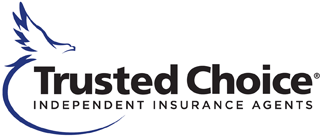No one wants an accident to happen at work, but some jobs are riskier than others. It is your job as an employer to minimize risk at the workplace. Here are some ways to protect your employees from common hazards.
Properly Assess Risks
Risk assessment is the first step toward creating a safer workplace. There are many tools at your disposal to help with this, including online risk assessment checklists and risk assessment training offered by the Occupational Safety and Health Administration (OSHA). Because you are legally responsible to follow OSHA regulations, you should know what those are for your particular industry. Once you understand the regulations, you can perform a risk assessment to make sure that you are in compliance. There are rules surrounding use of mechanical equipment, ladders, personal protective equipment, eye-washing stations, management of hazardous chemicals, and more. In addition to ensuring compliance with OSHA regulations, keep an eye out for common sense risks. Your facilities should be clean, tidy, free of spills, and properly maintained to minimize the possibility of accidents occurring.
Ensure Protections Are in Place
An important part of keeping your employees safe is to utilize the proper protections for each task. Employees should be expected to wear their personal protective equipment such as hard hats, gloves, eye protection, ear protection, reflective clothing, masks, and more. Provide wash stations in suitable locations. Hazards should be clearly marked with appropriate signage. Traffic barricades help protect workers from dangers near a road. Block off work zones. These are all important steps you must take to protect your employees.
Provide Safety Training
One of the OSHA requirements for employers is to provide safety training for each employee in a language that they understand. No matter how safe you make your workplace, each employee is only as safe as they choose to be. Your employees should be held accountable as to how well they conform to work safety policies. Training should be done immediately after being hired, it should be frequently repeated, and it should be renewed whenever there is a change. Work hard to establish a culture of safety within your workplace. And remember to lead by example. What you do will make a deeper impact on your team than what you say.
Don’t let an unsafe work environment disrupt business, bring harm to anyone, or cost you money. Adhere to the requirements, provide proper protections, train your employees, and lead by example. One thing you will never regret is implementing safety protocols.
Check out this article on what insurance policies contractors need!
LEGAL DISCLAIMER
Views expressed here do not constitute legal advice. The information contained herein is for general guidance of matter only and not for the purpose of providing legal advice. Discussion of insurance policy language is descriptive only. Every policy has different policy language. Coverage afforded under any insurance policy issued is subject to individual policy terms and conditions. Please refer to your policy for the actual language.




